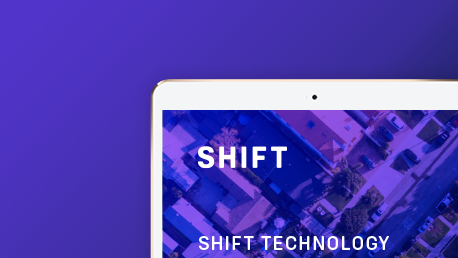The intense combination of uncontrolled inflation, higher claims costs, and a changing workforce is putting the pressure on loss ratios and insurer profitability. Insurers need to mitigate the impact these challenges have on claims performance, and improving subrogation is an untapped opportunity to do just that. Yet, many insurers still rely on the same methods they always have to maximize subrogation recoveries.
Are insurers leaving money on the table by using legacy methods for subrogation in a new age of insurance claims? Subrogation Value Engineering expert Michael Loiseau and Product Marketing Manager Tom Harrington discuss the state of subrogation today and the opportunities service providers are missing.
The modern subrogation landscape
Several critical factors are having a major impact on the severity and types of insurance claims taking place today, all of which are creating a new landscape for subrogation.
- Economic conditions: The modern economy is having a significant effect on the conditions for subrogation. Inflation and negative economic circumstances are leading to much higher insurance claims. As a result, insurance providers are left in a much greater deficit, increasing the need — and challenge — for effective subrogation recovery.
- Pandemic: The pandemic has had an interesting effect on today’s insurance claims. As many individuals continue to work from home and travel less in this post-pandemic world, there are fewer drivers on the road. Yet, less frequent driving and more intelligent vehicles have created less experienced drivers, resulting in greater accident severity and, subsequently, higher insurance claims.
- Vehicle costs: While we celebrate the technology our cars offer today, the severity of accidents mentioned above combined with the expense of our highly computerized vehicles results in much higher repair costs than the industry has seen before.
- The great resignation: Perhaps one of the most significant impacts today’s landscape has on subrogation is the effect on the insurance workforce. Seasoned handlers are resigning in favor of remote work, switching industries, or retiring altogether, leaving fewer experienced professionals to handle advanced subrogation recovery. When professionals are inexperienced and untrained on the best methods to address subrogation, they don’t know what questions to ask or where to look.
Why service providers are missing out
On top of an unfavorable environment for subrogation, there are a number of factors within the subrogation process that result in insurance providers leaving money on the table.
- Varying legislation: The laws surrounding accident faults and insurance coverage vary from state to state. These complications can make it very difficult for handlers to manually understand the differences in how to address subrogation from one location to the next. “In certain states, you can collect for no-fault payments," says Shift Subrogation Expert, Michael Loiseau. "In others, you have conditions that need to be met in order to collect. To stay current on changing laws is very important.”
- Inexperienced Professionals: As previously mentioned, the loss of senior handlers has resulted in less experienced professionals who may not know what questions to ask or have the incentive to hunt down the data they need. In some cases, providers simply don’t follow through with the subrogation recovery process. In others, it leads to outsourcing subrogation due to a lack of resources, which often results in someone trying to chase down money within the limited parameters they have — and missing significant opportunities for recovery. “When you look at internal training versus the external cost of outsourcing, internal training should always win out", said Loiseau. "With the right tools to help guide and assist through that training, it’s a huge win for the carrier.”
- Manual Tasks: Despite organizations having access to claims automation platforms, they often are not using it to its full potential, especially not when it comes to subrogation. This means the subrogation process can be overwhelmingly manual, resulting in time-consuming, tedious data sifting with a low recovery yield.
- Legacy Platforms: Even when insurers are using a claims platform for subrogation tasks, it is often through a “legacy platform” — a massive, older system where critical data lives, but is difficult to access. It can take extensive amounts of time to find the right information through legacy platforms, and even once found, it lacks the insights and connectivity to make that data actionable to realize subrogation recovery potential.
Benefits of Improving Subrogation Recovery Through AI
Having the right tools and solutions that tap into AI for subrogation can make all the difference in terms of recovery, competition, and customer satisfaction. The power of AI streamlines the entire claims handling process and detects opportunities for recovery that providers miss.- Create a Competitive Advantage: Among a sea of service providers all offering generally the same services, what’s making your company stand out? While there are a number of “big players” in this industry, many customers are not interested in working with a large organization and would prefer a more personal experience from a smaller provider. By making AI-powered subrogation decisions, you can become known for doing subrogation well and gain an advantage over direct competitors.
- Deliver an Unexpected Experience: It’s no longer enough to deliver exactly what you offer. Now, insurers need to be able to help the experience feel personal and special by going above and beyond. Being able to overdeliver with high subrogation recovery creates an unexpected customer experience that helps boost customer loyalty and lifetime value.
- Carve out the Next Generation of Consumers: Customers are looking for increasingly instant, personalized, and seamless insurance experiences, and AI can help deliver that. By tapping into the data discovery, personalization, automation, and speed that AI-powered subrogation delivers, service providers can drive up customer satisfaction and create space within a new generation of customers with high expectations.


